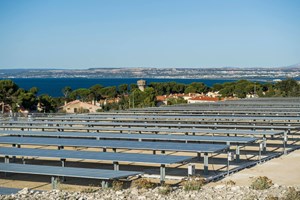News
Study suggests solar energy can be cleanly converted into H2
Research led by the University of Strathclyde suggests that solar energy can be accessed and converted into H2.

Greenhouse gas (GHG) emission need to be significantly reduced to avoid potentially catastrophic effects of climate change, with access to clean and affordable energy needed to eliminate our reliance on fossil fuels.
The UK Government plans to replace fossil fuels using H2, a storable fuel.
Green H2
Most H2 is still made from natural gas, producing GHGs and green H2 production is urgently needed. Green H2 is produced from water using a photocatalyst – a material which drives the decomposition of water into H2 and oxygen using sunlight.
The study, ‘Photocatalytic overall water splitting under visible light enabled by a particulate conjugated polymer loaded with iridium’ is published in Angewandte Chemie, a journal of the German Chemical Society. It suggests that using a photocatalyst under simulated sun light facilitates the decomposition of water when loaded with an appropriate metal catalyst - in this case iridium.
When used in a fuel cell, H2 does not emit any GHGs at the point of use and can help decarbonize sectors such as shipping and transportation, where it can be used as a fuel, as well as in manufacturing industries.
Solar energy
“An abundant renewable energy resource to address the challenge of sustainable energy exists in the form of the Sun, with the energy reaching Earth's surface eight thousand times greater than the entire annual global energy need of our societies,” said Principal Investigator, Dr Sebastian Sprick, from Strathclyde.
“The reported photocatalyst can access solar energy through energetically unfavorable processes to generate a storable energy carrier in the form of hydrogen from water. The hydrogen then can be converted cleanly into electricity in a fuel cell with water being the only side-product.
“This study provides a way forward to optimize further as it is not sacrificial. The photocatalysts (polymers) are of huge interest as their properties can be tuned using synthetic approaches, allowing for simple and systematic optimization of the structure in the future and to optimize activity further.”
Researchers say another potential advantage is that polymers are printable, allowing the use of cost-effective printing technologies for scale up - just like newspaper printing.
Dr. Sprick said, “This will also be important to produce hydrogen at scale to address climate change effectively.”

